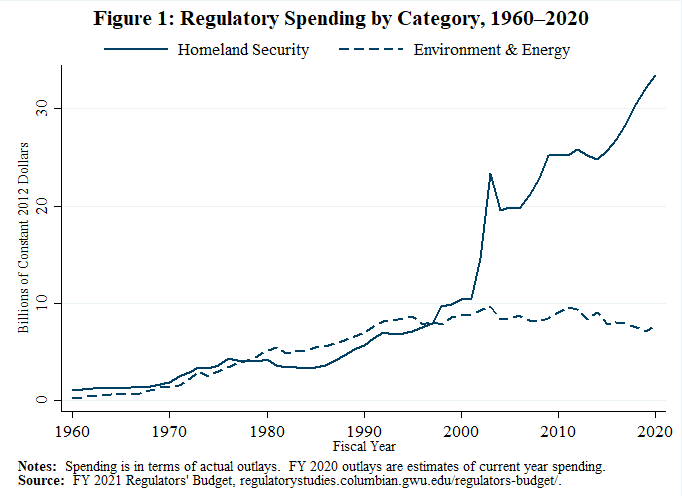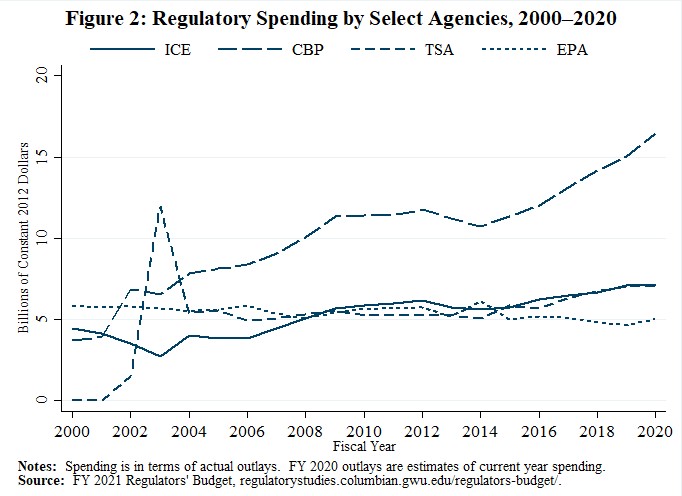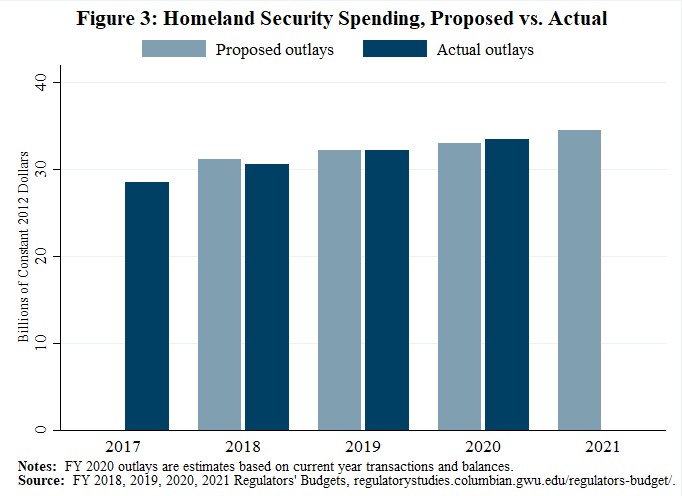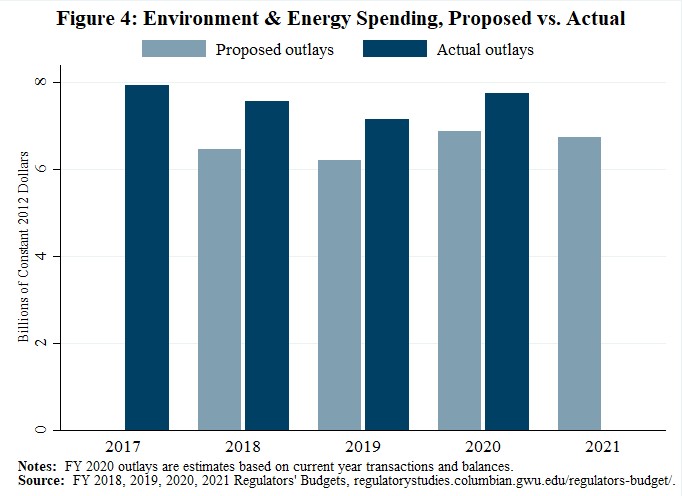Download this Regulatory Insight (PDF)
Abstract
This Regulatory Insight analyzes four Trump administration budget proposals to identify notable recurring trends in regulatory spending. Budget data indicate that spending on homeland security regulation has risen, while outlays for environment and energy regulation have fallen. Comparing the president’s budget proposals with actual outlays suggests where the administration has been largely successful in accomplishing its political goals and where Congress has hindered those goals. The results highlight how federal budgets are a product of compromise between the executive and legislative branches.
Introduction
Presidents enter their first term with a long list of policy priorities, only some of which are accomplished. Although sorting through political rhetoric is challenging, one major indicator of a president’s priorities is the annual budget proposal to Congress. The recently published fiscal year (FY) 2021 Regulators’ Budget report analyzes budget data on spending and personnel dedicated to developing, administering, and enforcing regulation. As an annual report, the Regulators’ Budget also sheds light on how regulatory spending has changed over time. Now, after four Trump administration budget proposals, what are notable recurring trends in regulatory spending? What do these trends indicate about the president’s priorities?
Overall spending on regulatory agencies rose approximately 10.5 percent from 2017 to 2020, in real terms, and the FY 2021 request would slightly increase regulatory spending by 0.3 percent over estimated 2020 levels. Nevertheless, a closer examination reveals major changes in the categories of regulation promoted by the president, with the common trend being more for homeland security and less for environmental regulation. By showing differences between proposed and actual levels of spending, the data also illustrate the divergent priorities of the president and Congress, especially on environmental regulation.
Charts
Regulators' Budget
The Regulators' Budget report is a joint effort of the Weidenbaum Center on the Economy, Government, and Public Policy at Washington University in St. Louis and the George Washington University Regulatory Studies Center in Washington, DC. These annual reports examine the Budget of the United States Government to identify federal agency spending and personnel devoted to developing, administering, and enforcing regulation.





